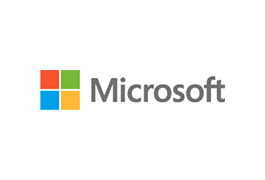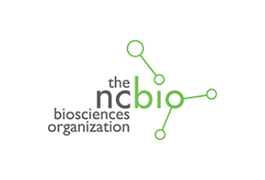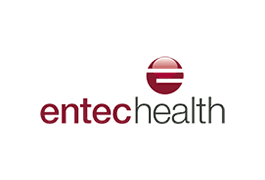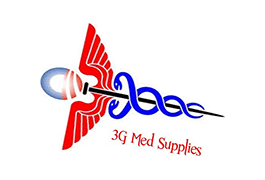22 September, 2020
Virtual healthcare is a term that is sometimes used synonymously with telehealth and telemedicine — but they’re not the same. Simply put, the term virtual healthcare is an umbrella term used to cover all of the ways patients and doctors can use digital tools to interact with each other. Telehealth is one of three broader categories that fit under the virtual healthcare term. The following table, courtesy of McKinsey & Company1, succinctly summarizes how the various terms fit together and what they refer to.
Virtual Healthcare
Categories |
Subcategory |
Definition |
| Telehealth | Synchronous (telemedicine) |
Live, two-way audio-visual interaction between patients and providers (e.g. video conferencing) |
| Asynchronous (store and forward) |
Provider-to-provider transmission of recorded health history (e.g. sending a lab test, x-ray, MRI to a specialist to request a clinical opinion) Provider-to-patient transmission of patient information (e.g. a provider emailing/texting a patient to check on them in a post-visit follow-up, a patient sharing photos of a skin rash for review and diagnosis) |
|
| Remote Patient Monitoring | Collection of electronic personal health/medical data which is transmitted for review by a remote provider | |
| Digital Therapeutics | Replacement Therapies | Evidence-based therapeutic interventions which leverage software to prevent, manage or treat a medical condition, in lieu of conventional treatments (e.g. pharmaceuticals) |
| Treatment Optimization | Optimizes medication, extending the value of pharmaceutical treatments (e.g. improving medication adherence, monitoring side effects of medication) | |
| Care Navigation | Patient self-directed care | Patients accessing their own information (e.g. website with secure, 24-hour access to personal health information) |
| E-triage | Tools that provide support in searching for and scheduling appropriate care based on symptoms/conditions as well as the price and quality of providers. |
Adoption of telehealth technologies
Prior to 2020 and the onset of the COVID-19 pandemic, telehealth adoption rates across the US were slow. The barriers to adoption were in part due to government regulations and the way that health insurers reimbursed practitioners for telehealth activities, but also because of the cost of and access to the technologies that would enable telehealth appointments. However, as the pandemic continues, many of the regulatory barriers, especially in the US, to the use of telehealth have been temporarily lowered or removed, insurers are adjusting their reimbursement policies and technologies are being sought to enable patients to securely communicate with their care providers from a distance. According to McKinsey and Co., telehealth adoption rates have increased from 11% of US consumers using telehealth in 2019 to 46% of consumers now using telehealth to replace canceled in-person appointments.2
The value of digital technologies in wound care
It is widely accepted within the wound care community that continued, regular objective analysis and precise documentation of wounds enables care providers to predict their healing, gauge responses to treatment, and maximize healing rates by tailoring interventions as required.3 However, still today the majority of clinical practice wound care specialists continue to use less precise manual wound assessment techniques and many also take images using mobile phones or digital cameras that are not linked to their patients’ medical records and don’t comply with medical data security requirements. Manual techniques performed by even experienced clinicians can’t provide the accuracy of wound measurements that digital devices with repeatable imaging and measuring methodologies can.4
Prior to the COVID-19 pandemic, digital technologies were becoming an increasingly important part of wound assessment because of their improved accuracy and data security. Now, digital technology uptake is also being driven by the need to see patients remotely or have patients send their own data to their care provider. Although there are some limitations with telehealth assessments, such as where a clinician cannot physically be in the same room as the patient to ascertain wound odor or touch the wound as part of the assessment, Mills et al. point out that ‘most studies have shown that video and photographic evaluation of wounds are comparable to in-person assessments. Through photography and video-based communication, healthcare providers can obtain a detailed history, visually assess the wound, and answer any questions in a similar fashion to a face-to-face visit’ (Mills et al.).5
Proven, accurate, and reliable wound care technology that supports telehealth assessments
The COVID-19 pandemic has accelerated the need for innovative wound care technologies that will ensure patients are able to be accurately assessed in safe environments. Many of the current wound care technologies fall into the asynchronous (store and forward) and remote patient monitoring sub-categories of telehealth outlined in the table above.
ARANZ Medical’s latest Silhouette feature, called Silhouette Home User, enables patients to use their mobile devices to take images and record notes about their own wound or skin condition and securely send the information to their healthcare provider without needing to leave their homes. This new feature safely connects users with their healthcare professionals and enables care providers to monitor their patients’ conditions from a distance. Learn more about Silhouette Home User.
Silhouette also enables store and forward (asynchronous) telehealth applications. Healthcare providers using any of the Silhouette point-of-care devices are able to record their patient’s healing information at the point of care, which could be in the patient’s home, at a community clinic, or in a hospital. The assessment information is securely stored on the device until there is an available network connection to send the data to the centralized database. The SilhouetteCentral database stores all of the patient’s assessment information, recorded with any of the point-of-care devices, enabling multidisciplinary teams to see the same information and collaborate on their patients’ healing journey.
Silhouette has been used as an asynchronous telehealth solution for assessing wounds and skin conditions for many years. In the US, the Department of Veterans Affairs utilizes Silhouette to monitor veterans no matter where they live. Watch this short video on the VA’s use of Silhouette for telehealth.
In Australia, Diabetes Western Australia has recently implemented Silhouette to support Aboriginal health workers working in remote clinics in the Kimberly region. They are focused on improving foot and wound care for Aboriginal people in remote locations who have alarmingly high amputation rates from diabetes complications. Watch this short video.
The future of telehealth for wound care after COVID-19
Currently, telehealth technologies are able to provide wound patients with access to timely and necessary wound management while preventing the spread of COVID-19; however, the shift to using telehealth beyond COVID-19 is not inevitable. There are numerous wound care technologies available today that can provide the accurate measurements, images, and the secure data sharing that are required for telehealth assessments, but the uptake and continued use of the technologies will become more a matter of willingness, funding, and permanent policy changes.6 Healthcare providers should be considering telehealth technologies that will provide ongoing improvements for their practices and better outcomes for their patients in the post-COVID-19 future, including improved convenience and access to care, and a more efficient healthcare system.
References
- https://www.mckinsey.com/industries/healthcare-systems-and-services/our-insights/virtual-health-a-look-at-the-next-frontier-of-care-delivery
- McKinsey COVID-19 Consumer Survey, April 27, 2020
- https://www.woundsresearch.com/article/evolving-field-wound-measurement-techniques-literature-review
- https://www.aranzmedical.com/uncategorized/can-improve-accuracy-wound-measurements/
- https://www.ncbi.nlm.nih.gov/pmc/articles/PMC7342801/
- Robeznieks, A. American Medical Association, How to maintain momentum on telehealth after COVID-19 crisis ends, https://www.ama-assn.org/practice-management/digital/how-maintain-momentum-telehealth-after-covid-19-crisis-ends?gclid=CjwKCAjw8MD7BRArEiwAGZsrBbnBVqZGBLCgVl92yq4uhRXmd7aHSEObZHTPoqu7hPoR7Gz1NTlK8xoCNvoQAvD_BwE
- https://evisit.com/resources/telemedicine-reimbursement-guide/





